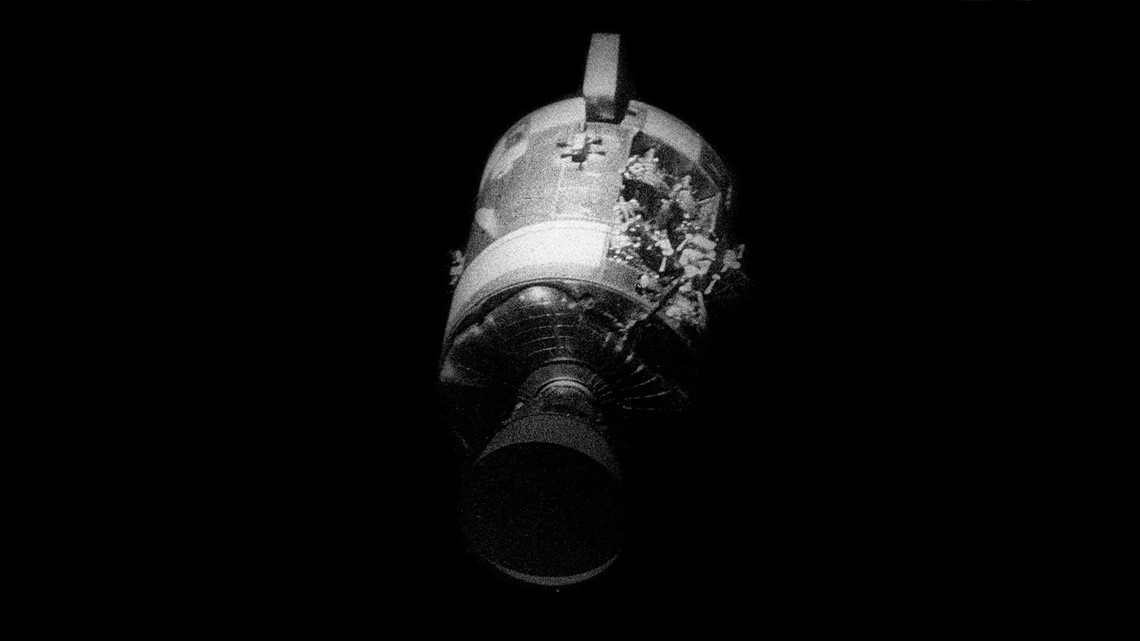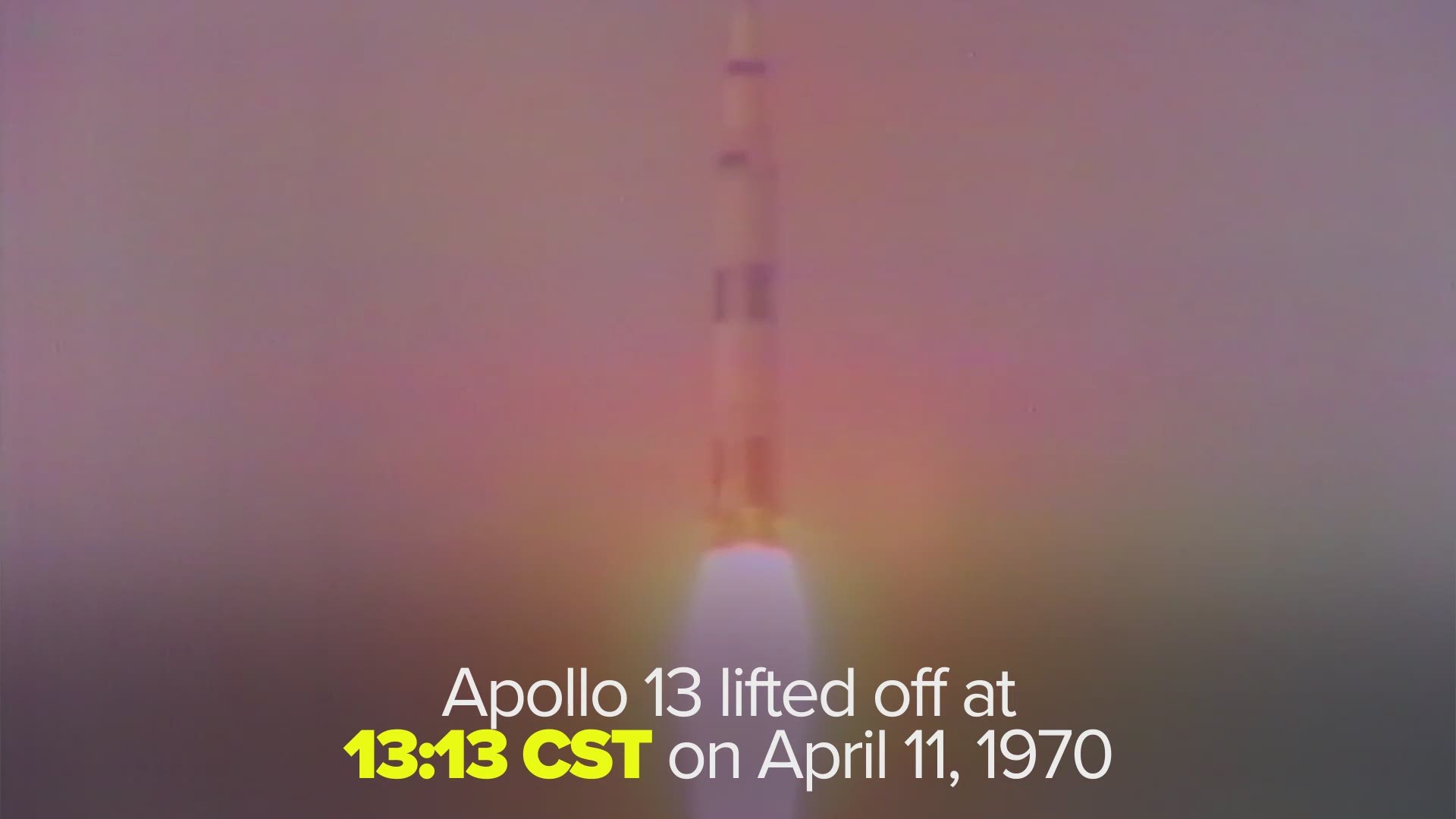Correction: An earlier version of this story stated the explosion happened at 55 hours, 46 minutes into the mission. It happened at 55 hours, 55 minutes.
April 13, 2020, is the 50th anniversary of the explosion aboard the Apollo 13 spacecraft as it traveled to the moon. Astronauts Jim Lovell, Fred Haise and Jack Swigert, along with NASA, had to quickly turn the mission from a moon landing to a desperate effort to get the three men home safely with a crippled spacecraft. They splashed down, safe, four days later.
Here is a look at some tidbits of the mission by the numbers, according to NASA.
72
Command module pilot Thomas "Ken" Mattingly was pulled from the mission 72 hours before launch after he was exposed to German measles. He was replaced by Swigert, who was a member of the backup crew.
13:13
Apollo 13 launched on April 11 at 1:13 p.m. Central Standard Time, or 13:13 in military time. Although the Saturn V rocket lifted off from Florida, where it was Eastern Standard Time, the mission was controlled from Houston. The official mission time is kept there.
5
Engine No. 5 -- the center engine of the Saturn V rocket -- malfunctioned and stopped firing about 5 1/2 minutes into liftoff. The other four engines were burned longer than planned to make up for it.
9:08
At 9:08 p.m. Central Time on April 13, Lovell uttered the now famous phrase, "Houston, we've had a problem."
2
The No. 2 oxygen tank was where the explosion happened. This caused the No. 1 tank to also fail.
200,000
The approximate number of miles Apollo 13 was from Earth when the explosion happened.
55:55
The explosion happened 2 days, 7 hours, 55 minutes into the mission.


9
About nine hours were cut off the return trip thanks an engine burn of more than four minutes that took place after Apollo 13 went around the moon.
6
It was estimated that the crew would run out of water about five hours before Earth re-entry, so the crew rationed themselves to 6 ounces of water each per day, 1/4 of their normal intake.
31.5
The crew lost a combined 31.5 pounds while on the trip due to dehydration. Lovell accounted for 14 of those.
622,268
The total number of miles Apollo 13 traveled
142:54:41
The duration of the mission: 5 days, 22 hours, 54 minutes, 41 seconds
1965
The year the flaw occurred that led to the explosion. From NASA: "In 1965, the (command module) had undergone many improvements that included raising the permissible voltage to the heaters in the oxygen tanks from 28 to 65 volts DC. Unfortunately, the thermostatic switches on these heaters weren't modified to suit the change. During one final test on the launch pad, the heaters were on for a long period of time. This subjected the wiring in the vicinity of the heaters to very high temperatures (1000 F), which have been subsequently shown to severely degrade teflon insulation. The thermostatic switches started to open while powered by 65 volts DC and were probably welded shut. Furthermore, other warning signs during testing went unheeded and the tank, damaged from eight hours of overheating, was a potential bomb the next time it was filled with oxygen. That bomb exploded on April 13, 1970 - 200,000 miles from Earth."

